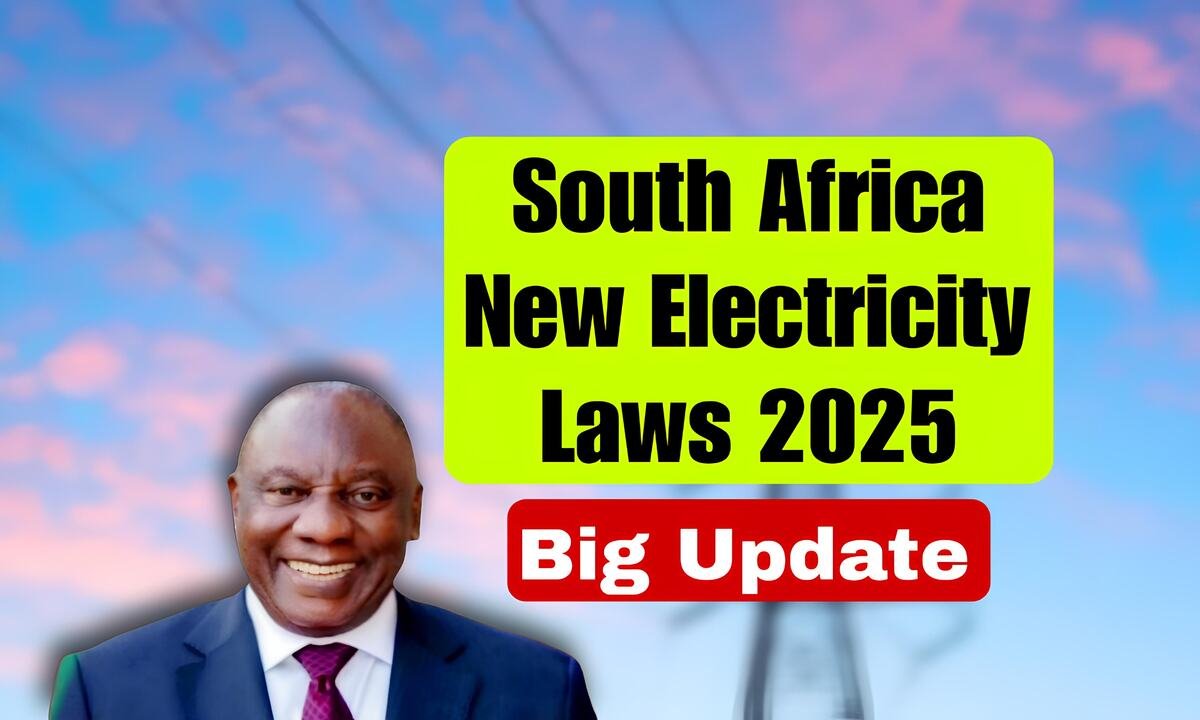South Africa’s New Electricity Laws of 2025: The electricity sector of South Africa is into a year of transformation. As of January 1, 2025, the Electricity Regulation Amendment Act of 2024 came into force and thus with sweeping reforms put in place to break Eskom’s monopoly, allow private generators to enter the market, promote renewable energy, and put a stiff upper lip against sabotage and theft.
Breaking The Eskom Monopoly And Setting Up Competition
The formation of a competitive, multi-market electricity system lies at the heart of the law. While Eskom remains the public transmission operator, over the next five years, an independent TSO will be established to act as a market controller and grid manager. The amendment also provides for the equal access of Independent Power Producers (IPPs) to the national grid, thereby offering businesses and consumers the freedom to choose their electricity provider.
Market competition, once a mere theory, is now a law. A Market Code will be designed under NERSA to control administrative and pricing transparency in wholesale and retail electricity trading, and transparency should thus be improved tremendously.
Renewables, Storage And Smart Grids For A Cleaner Future
This reform is in line with South Africa’s clean energy drive. The Renewable Energy Independent Power Producer Procurement Programme (REIPPPP) is being further expanded, with targets such as having 50 percent renewable energy capacity by 2030, pushed by a legal clarification on solar farms, wind projects, and battery storage systems. Large-scale initiatives such as the Seriti Wind Power Station (155 MW) and Grootspruit Solar (75 MW), currently under construction, are beneficiaries of these reforms.
Smart grid elements are introduced to support efficiency, reduce power losses, and better balance supply and demand, an important aspect when dealing with intermittent renewables like solar and wind.
Grid Expansion And Private Investment
To facilitate this expansion, from April 2025, a new regime allows private entities to develop transmission networks, mostly in energy-rich areas such as the Northern Cape and Gauteng. These projects will add over 3.2 GW of new grid capacity, allowing for faster connection of renewables to the national grid.
Important changes took place with Eskom, where unbundling was done into generation, transmission, and distribution divisions. The National Transmission Company of South Africa (NTCSA) is nowadays an independent entity with its own license and regulatory oversight.
Consumer Protection And Infrastructure Security
The reforms translate to more choice and perhaps less prices hence for citizens. By moving away from dependency on Eskom’s grid and allowing for increased renewable imports, NERSA desires shedding load-shedding and curbing tariff hikes. The new laws also firmly penalize sabotage or theft of power infrastructure, carrying punishments of up to 5 years in jail or a fine of R1 million, with even more severe provisions for persons receiving stolen equipment.
What This Means For You
- Homeowners and businesses can now opt for renewable energy providers or battery storage, and have legal enforcement.
- Local economies may blossom with job opportunities from green energy projects in construction, maintenance, and smart-grid tech.
- Rural broadband may gain extra leverage as grid resilience goes up.
- Consumers ought to also keep tabs on NERSA adjustments, as new tariffs are supposed to offer fair value in this developing market.
Also Read: SASSA Grant Payment Dates For August 2025 Revealed, Mark Your Calendar
